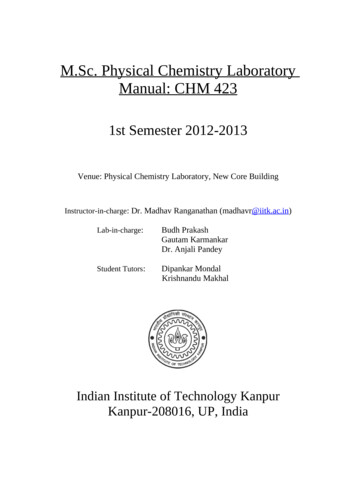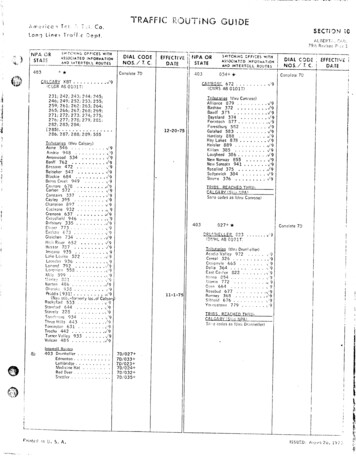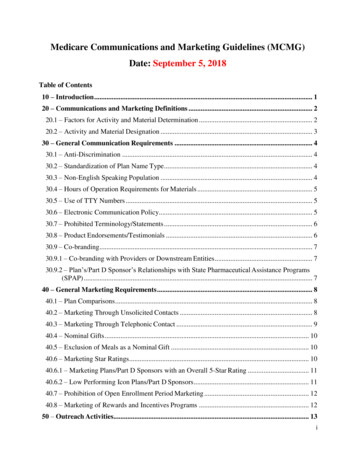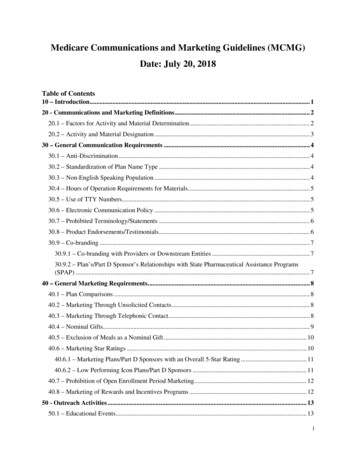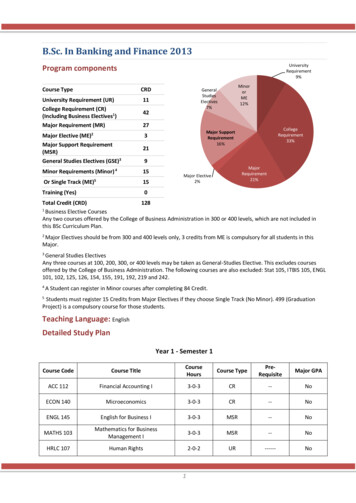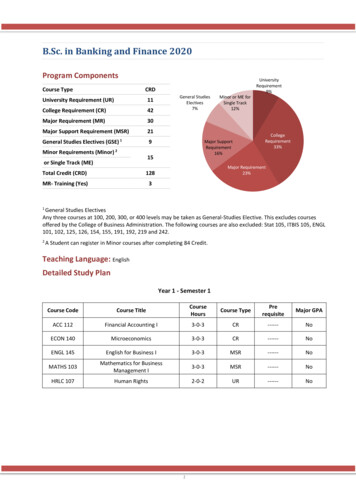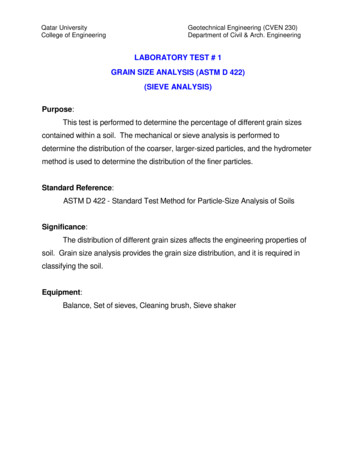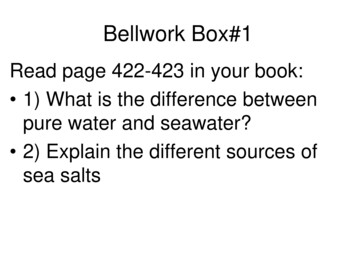
Transcription
Bellwork Box#1Read page 422-423 in your book: 1) What is the difference betweenpure water and seawater? 2) Explain the different sources ofsea salts
What percent of the Earth’ssurface is covered by Oceans?70%!
Earth has four Oceans
Which one is the largest?Covers 30% of surface of the Earth
Which one has the longestdistance North to South?
Which one is mostly in the SouthernHemisphere?
Which one is the smallest?And mostlyin theNorthernHemisphere
Ocean water is a mixture ofgases and solids dissolved inwater4%dissolvedelements:Cl, Na, MgS, Ca, K96%PUREWATER
Salinity A measure of dissolved solids insea water Number of grams of dissolvedsalts in 1 kilogram of water Evaporation and freezingincreases salinity
Salinity changes with depth:
What two substances are themost abundant in Ocean Water?ChlorideSodium
Salts and other materials in oceanwater come from: Volcanic activity in oceans Erosion of land areas by rivers Wave action along theshoreline
Density of Ocean Water: Density is the mass of asubstance per unit volume
Two factors affect density1. Salinity- Dissolved solids make oceanwater more dense than freshwater2. Temperature- Cold water is more dense thanwarm water
Most abundant gases dissolved inocean water: Nitrogen (N2) Carbon Dioxide (CO2) Oxygen (O2)
CO2 dissolves most easily Cold water holds more dissolved gases Warm water holds less dissolved gases Think of a pot of water on the stove – whatis coming out as the temperature rises? GASES! (oxygen) The warmer the water, the less gas it holds!
The dissolved gases arerecycled back into the air The dissolved solids donot leave, they are usedby living things in the sea.
Temperature of Ocean Water Ocean waterhas ability toabsorbsunlightwhich heatsthe water
Layering of water by temperature:
Surface zone (mixed layer): Water temp higher at surfacebecause of direct sunlight Waves and currents mix surfacewater and transfers heatdownwards Extends 100-400 meters Warmer at equator than at poles Only place where enough light ispresent to grow marine plants
Thermocline:Zone of rapid temperature changeWarmer water on top of layerColder, denser on bottom of layer
Deep zone:Area of very cold water thatextends 1000-4000 meters
COLOR of the Ocean The color of the ocean isdetermined by the way itabsorbs or reflects sunlight.Much of the sunlight penetratesthe surface of the ocean and isabsorbed by the water.
Blue wavelengths oflight are the last colorto be absorbed
COLOR of the Ocean In clear ocean water, blue lightcan penetrate up to 100 mbefore being absorbed. Until itis absorbed, it is reflected andmakes the upper layers of oceanwater appear BLUE.
At times it will look like other colorsdepending on what particles are in thewater (ex. rocks, animals, etc.) No wavelength 200 meters of light canpenetrate beyond, so beyond that it isDARK.
Upwelling process in which surfacewater moves farther out intothe ocean and deep watermoves upward to replace thesurface water
Observe how upwellingoccurs.
Read page 422-423 in your book: 1) What is the difference between pure water and seawater? 2) Explain the different sources of sea salts . What percent of the Earth’s surface is covered by Oceans? 70%! Earth has four Oceans . Which one is the largest? Covers 30% of surface of the Earth . Only pl



